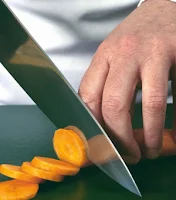But one of the worst ways to get noticed on twitter is to Spam. Especially by those that have huge followings and are considered the 'twitter elite' in their specific topic. Oh, this will get you attention for sure, but it will all be all negative and actually defeat your purpose and damage your rep. Most will ignore your spam, quietly blocking and reporting you. Some, like myself will call you out on it. In public. To our thousands of readers and followers. That can in some cases be the kiss of death. So, here are some simple techniques to avoid being put in what I call, Spam Jail.
If you are seeking notoriety, attention, or want to call certain individuals, or personalities to your brand, instead of using spam if you have a great news article or story, first and foremost, follow the twitter profile of the person or company you are are trying to connect with. Re-tweet their postings. Reply to certain posts or tweet and start a dialog. Most of us keep a close eye on our mentions, re-tweets and activity. We do this for a variety of reasons, but for the most part, it is to see if the content we are posting and tweeting is being well received and to keep a pulse on what is important to our twitter following. It also allows us to engage and respond to our readers and followers when they reply or re-tweet out content.That will get you noticed.
Second, if you want to get your tweets noticed, simply ask for a follow from that individual so you can talk with them via DM. It's simple to ask a well know twitter profile if they think they're followers may be interested in a news article or post or item that you want to get out there to a wider public. This works very well with me for instance. Why? First it shows etiquette and respect. If done this way, it will more than likely result in a follow, at least to entertain your request in private. If your content is good, timely and interesting, folks like me will probably re-tweet it for you and now that you have our attention, if the trend continues, we may include it in our regular tweet rotation and you will have more that achieved your goal.
Remember, be patient above all else. A positive and well followed Twitter rep is not something you can gain overnight. You must develop relationships, show consistency, and above all, show some class. Spam will absolutely get you noticed immediately!! It will also get you called out, complained about, blocked and reported. Your goal is to develop a great reputation and twitter following and if you are new to twitter, or have even gotten impatient trying to get noticed, with Spam, you can actually shoot yourself in the profile, before you even start your campaign. I hope this helps.
Bon Appetit,






